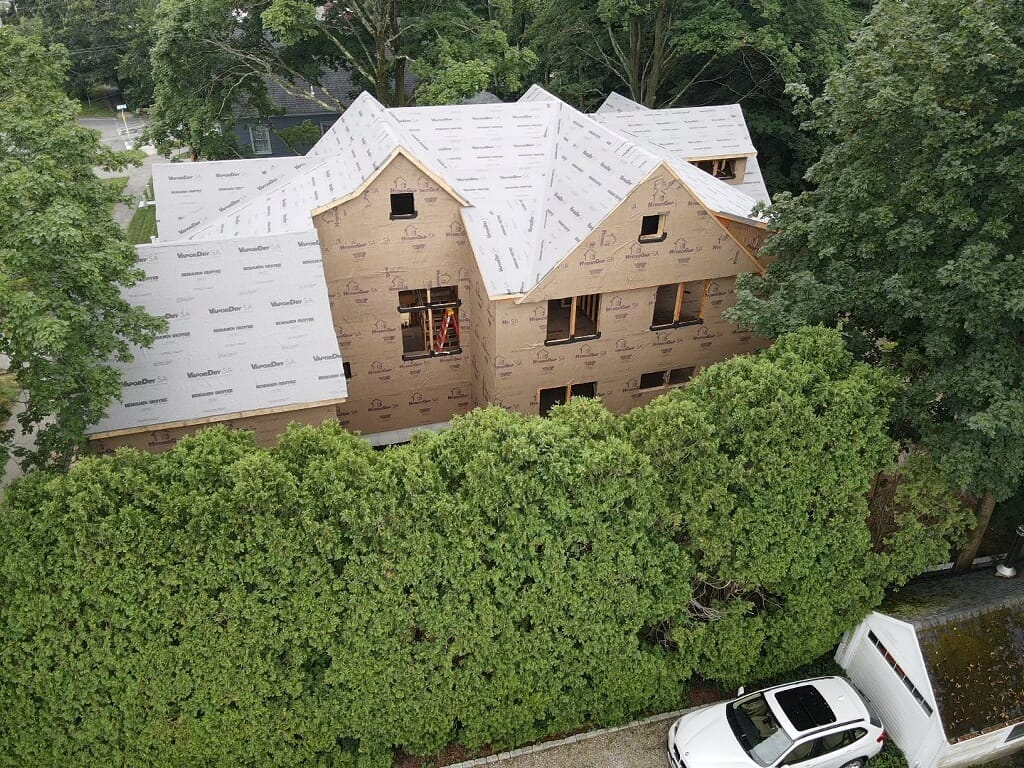AI is everywhere — from delivery routes to healthcare, finance, and, now, the building industry. Many pros are already using AI to ask about product selection and installation. AI can enhance productivity, improve safety, and reduce costs by automating tasks like design and scheduling or providing real-time analysis of site conditions.
But while AI is a powerful resource, blind reliance can lead to costly mistakes. Human oversight remains essential, no matter how you use AI.
The Rise of AI in Construction Guidance
It’s no longer a question of whether building pros will use AI, but how and in what ways they’ll use it. If you’re already turning to AI to work more efficiently and find answers faster — the real challenge now is how to ensure you’re using it responsibly, strategically, and effectively.
For example, tools like ChatGPT, Gemini, or Claude can provide answers to installation questions or step-by-step guidance, but because they’re pulling information from a variety of sources on the internet, responses may be generic, outdated, or non-compliant with local codes and manufacturer requirements, leading to increased risks if you only rely on AI and don’t verify the information received.
Key Risks of Relying Too Heavily on AI
AI can make us more efficient, but it’s important to ensure proper guardrails are in place to prevent inaccurate information from influencing installation decisions.
Some of these risks include:
- Installation errors from following AI blindly
- Misinterpretation of AI advice versus manufacturer instructions
- Callbacks and increased liability
- Using outdated or unverified information
- Voiding warranties by deviating from official guidelines
Recently we experienced this at Benjamin Obdyke: An installer called because AI had told him we required furring strips over HydroGap housewrap, which is inaccurate. Thankfully, he knew to conduct a human-check, thereby avoiding incorrect installation and voided warranties.
In short: What is generated from AI should never be taken at face value.
Best Practices for Using AI Safely
Though there are risks to AI, there are also ways to mitigate those risks and use AI responsibly and safely. When generating answers to your installation or product questions, always perform a human-check.
This includes checking the reference source(s) that AI identifies as the origin of its answer. Ask yourself: Is it legitimate and up to date? Then check the manufacturer’s published information or website to confirm the information matches what the manufacturer promotes.
Here’s what else you can do:
- Assess whether advice makes sense in context (materials, climate, building type).
- Use AI as a reference, not as a replacement for manufacturer instructions, skilled labor, and supervision.
- Stay updated on AI capabilities and limitations in construction.
- Cross-reference AI information with local building codes to ensure accuracy and compliance.
AI can expose you to new concepts or ideas you may not have known or thought of, but it should never be taken as certified fact. Use it to expand your horizons, not as an absolute authority.
The Role Manufacturers Play in AI Information
Manufacturers also play a key role in ensuring accurate product information appears in AI results. While control is limited and we can’t directly influence the information shared by AI tools, there are steps we can take:
- Keep installation guides and product documentation up to date
- Publish blogs and articles about best practices and common installation questions
- Explore ways to integrate AI directly on your website so installers can access accurate, verified information
For example, adding an AI-powered chatbot that draws directly from our installation guides can ensure users receive correct instructions — without relying on third-party tools.
AI and Its Impact
AI is a powerful tool, but human expertise is irreplaceable in building envelope work. Human oversight can help ensure installation best practices and adherence to manufacturers’ guidelines and local codes. When used wisely, AI can improve efficiency and insight. When used carelessly, it can compromise quality and safety.
Encourage your teams and trade partners to use AI responsibly: check, double-check, and then build. If you have questions or need help confirming information, contact us — we’re here to help.




